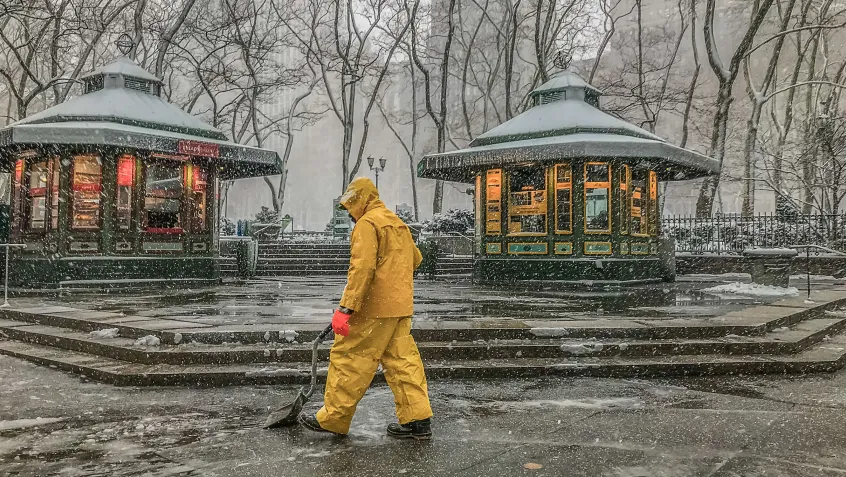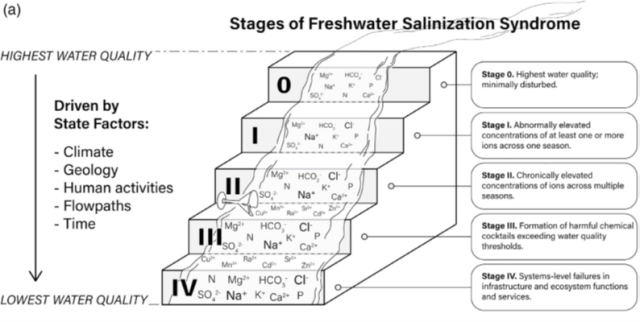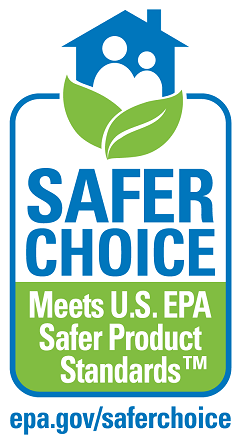
Winter weather can turn calm streets into a slippery obstacle course in no time. City, county, and state governments are generally responsible for clearing and maintaining public roads during winter weather events. However, if you live in a private home—even as a renter—you’re likely responsible for removing ice and snow from your driveway, the sidewalk bordering your property, and the area around your mailbox.
Are you prepared for the job and up to speed on your winter salt smarts?
How Does Salt Melt Ice on Roads and Sidewalks?
After you shovel, different salt compounds (also called deicers) can help keep these areas clear by lowering the freezing point of precipitation when it hits the ground. When the salt's individual chemical components mix with the wintery precipitation, they can interfere with the water's ability to form a solid, or freeze. This can melt existing snow or ice already on the ground, and help to reduce the amount of ice and snow that will accumulate after the salt is applied.
The application of salt doesn't completely prevent the water from freezing, it just pushes the freezing temperature of the water from 32°F to a lower temperature, which varies with the type of salt used. If you are looking to use salt to help with ice removal around your home or vehicle, check the temperature range on the packaging—areas that experience more extreme cold will require different salts than areas that have a more temperate climate.
What Are the Environmental Impacts of Road Salt?
While salts can help make sure that your pathways stay safely clear of ice and snow, too much salt can have negative repercussions on aquatic organisms as well as on the nation's supply of drinking water when snowmelt and runoff carries the deicers into local waterways.

Studies from the US Geological Survey demonstrate how road salt runoff significantly impacts our waterways. Research in regions like the Upper Colorado River Basin highlights how human activities, including winter road management, can affect water salinity. These impacts are particularly concerning when combined with existing pressures from climate change, irrigation practices, and groundwater dynamics. The studies emphasize how crucial it is to manage our use of road salt to protect our water systems.
Understanding and mitigating the environmental impact of road salt and other deicers is crucial for protecting water quality, urban infrastructure, and maintaining ecological balance.
Is Salt Harmful to Pets in Winter?
Pets, particularly dogs, face risks from winter deicing chemicals, which can cause irritation or even bleeding in their paws. Sharp ice and encrusted snow on treated surfaces can worsen the damage, making it important to protect your pet’s paws during winter walks. These chemicals can include toxic substances such as antifreeze that may cause gastrointestinal distress or poisoning if pets lick them off their fur or paws. To protect your pet, always clean their legs, stomach, and paws thoroughly after outdoor walks.
What Are Some Alternatives to Road Salt?
Agricultural byproducts, such as those from beets, beer brewing, or cheesemaking, can be mixed with salt brine or calcium chloride to create an effective, eco-friendly deicing solution.
States like Kansas and Missouri have begun using beet juice to reduce their reliance on traditional road salt. The sugar in beet molasses lowers the freezing point of water, much like salt, and its sticky consistency helps it cling to roads longer. Pickle and cheese brine work similarly, with Wisconsin using cheese brine as part of their deicing efforts.
Other byproducts, such as molasses and soybean oil, work differently by preventing ice from bonding to the pavement. While they don't lower the freezing point like salts and beet juice, they help create a barrier between ice and the road surface. When mixed with traditional salts, these substances reduce the overall amount of salt needed. This combination not only improves road safety but also helps lessen the environmental impact of winter road maintenance.
In addition to agricultural byproducts, sustainable deicing also includes bio-based materials like grape skins and alfalfa meal. These products are effective at melting ice, improving traction, and causing less harm to the environment.
Alternative Deicing Solutions for Your Home
In case you don’t have several gallons of beet juice lying around, here are some other eco-friendly deicers you can use around your home:
- Sand and grit offer a simple solution for improving traction on icy surfaces. They do not contribute to salinity or pollution, making them ideal for environmentally conscious efforts to manage ice and snow safely, and they are easy to apply across large areas.
- Calcium magnesium acetate (CMA) is an eco-friendly deicer made from limestone and acetic acid. Free of rock salt, nitrogen, and chloride, it helps prevent snow and ice from sticking to surfaces, making removal easier, and remains effective in winter conditions down to 20°F.
- Heated mats provide a reusable, chemical-free method for melting snow and ice. Ideal for entryways and small paths, they offer a safe and clean option that eliminates the need for deicing chemicals.
- Ashes and coffee grounds are simple, low-cost options for adding traction on icy surfaces. They are easy to find and recycle, but they can leave a mess, so they may be best for areas where foot traffic is light.
Another way to reduce the overuse of deicers is to carefully follow the instructions on the packaging, applying them sparingly, and keeping them away from plants. The EPA also has a list of deicers with the Safer Choice label, which identifies products that are safer for both people and the environment without sacrificing quality or performance.

Search the list of Safer Choice qualified deicers here. (Select "deicer" under the Product Type drop-down menu.)
What’s Next in Sustainable Winter Road Maintenance?
Looking ahead, reducing road salt usage is key to balancing winter safety with environmental protection. Alternatives like porous pavement, which allows water to filter through and reduces ice buildup, and solar roads that heat up to melt snow, are paving the way for more sustainable winter road management.
You can help in the fight against waterway pollution by using green infrastructure and xeriscaping techniques around your home to reduce stormwater runoff and improve groundwater quality in your community.


